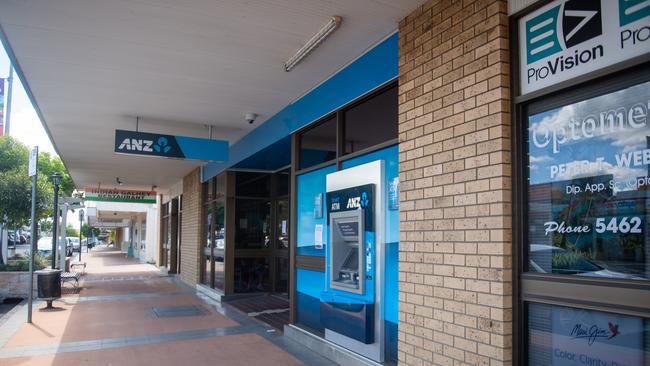ANZ to close another 15 branches, many in rural towns
ANZ is set to shut another nine branches in regional centres in NSW and two more in Victoria, helping bring the total it’s closed since January last year to 146.

ANZ is set to close another 15 bank branches, bringing the number of shuttered locations to 146 since January of 2020, according to the Finance Sector Union.
In a statement on Monday the union said the bank was set to close the branches – many in rural and regional areas – by October of this year, impacting the careers of 54 staff.
An ANZ spokesman said excluding the 15 new closures, ANZ had “approximately 400” branches still in business around the country,
It means that ANZ has closed nearly as many branches in just more than one year than it did in five. From 2015 to 2020, 186 branches were closed.
In NSW, locations in Forster, Cooma, Ulladulla, Salamander Bay, Casino, Cowra, Cootamundra, Leeton and Kempsey will close.
In Victoria Bacchus Marsh and Lakes Entrance have been targeted for closure, alongside Wongan Hills, Bassendean, Baldivis and Beverley in WA.
The Bacchus Marsh branch will close earlier than the rest, on September 16, while Bassendean and Baldivis will close on June 9.
Finance Sector Union (FSU) National secretary Julia Angrisano accused ANZ of putting profits over people by closing the branches.
“But that’s not the view of the ANZ. The ANZ takes the cake as the worst performer when it comes to deserting communities around Australia,” Ms Angrisano said.
“This is a bank which lives up to the Banking Royal Commission’s description of banking as being driven by greed and short-term gain.”
“When there is a financial downturn the Federal Government backs the banks in order to protect the economy. So in our view, banks have an obligation to continue to provide a service to the community.”
“But the ANZ doesn’t understand that basic principle. The ANZ is obsessed with putting profits before people.”
She also said the remote locations of many of the locations would force customers to travel long distances to branches in other towns, and that many of the affected staff would not be offered other positions.
“If you live and work in a regional town, your opportunities for redeployment are virtually nil,” she said, adding that ANZ’s Covid Enhanced Redundancy provisions had recently been removed, meaning staff affected by the COVID down turn are no longer guaranteed a minimum 9 months’ redundancy pay.
ANZ Managing Director of Retail Katherine Bray confirmed the closures and said the bank would retain as many staff as possible, with a past employee care fund for those who may fall into financial hardship if they are unable to be redeployed.
“We announced the closures to employees last week and we will seek to retain as many of them as we can, particularly with increased demands on other areas of the bank that could benefit from their skills and experience,” she said.
This slate of closures are ANZ’s second of 2021, following a decision to close 27 branches in February.
ANZ CEO Shayne Elliott told the Standing Committee on Economics last week that it “might be the case” that ANZ has closed the highest proportion of branches out of the big four banks, but attributed it to “the astonishing, rapid rate of customer behaviour change.”
“Going to a bank branch is like going to the dentist. You know you have to do it but you don’t really want to do it. And the reality is now you don’t have to, because we have all these fantastic digital tools, we have home loans specialist that will come to your house,” he said.
“So that convenience, has meant through all of those tools, means we have seen branch traffic fall at an alarming rate, in fact the foot traffic in the average branch has been falling somewhere between 10 and 20 per cent per annum for a number of years.”
Ms Angrisano said pushing customers online is part of the business model of the major banks.
“Shutting branches in regional areas does not reflect the true needs of bank customers,” she said.
“They need to be able to transact the full range of banking and financial services in branches close to where they live.
“And we know the community is not ready for managing their finances online because one third of bank customers either don’t have a computer, do not have sufficient skills or are not interested in taking up online banking.”




To join the conversation, please log in. Don't have an account? Register
Join the conversation, you are commenting as Logout